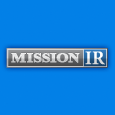International Stem Cell Corp. (ISCO) Immense Thera
Post# of 124

The promise of stem cell tissue transplantation is particularly exciting for conditions such as Parkinson’s disease, an incurable and progressive disorder of the nervous system characterized by a gradual at first, and then increasingly severe impairment of various motor control faculties. Parkinson’s disease makes a good poster child for the enormous potential of stem cell therapy in other diseases/conditions, because it is materially defined by a localized degeneration of neurons, making targeted replacement therapy via injected cells extremely appealing.
International Stem Cell Corporation (OTCQB: ISCO) is at the forefront of developing such therapies via its capacity to produce pluripotent (having the ability to develop into essentially any cell in the human body), non-embryonic, human parthenogenetic stem cells (hpSCs), such as its lead product candidate, human neural stem cells (hpNSCs). And because hpNSCs have produced abundant evidence thus far that they can not only differentiate into neurons that help produce the primary neurotransmitter whose falloff is associated with Parkinson’s disease, dopamine, but can also directly express neuroprotectant capabilities, the potential for treating other incurable CNS diseases like multiple sclerosis, muscular dystrophy, or Lou Gehrig’s disease, is effectively on the table.
Moreover, because the company’s proprietary technology for creating pluripotent hpSCs utilizes unfertilized eggs, which are chemically stimulated to begin the process of division before being differentiated into either patient specific human leukocyte antigen-matched and histocompatible (heterozygous) hpSCs or HLA homozygous hpSCs that are immune-matched for compatibility with the vast majority of the population, ISCO’s technology constitutes an end run on the ethical controversy that has plagued stem cell research. At the same time, because a relatively small series of human leukocyte antigen (HLA) homozygous cell lines could effectively present treatment options which are suitable for huge swathes of the human population, ISCO has at its disposal a methodology for creating commercial scale volumes of cells (for therapeutic or research purposes) that resolves the stem cell industry’s primary procedural stumbling block, immune system rejection.
This is a significant advantage when it comes to research purposes and ISCO has already taken up the lead in the sector, creating the world’s first true human stem cell bank, UniStemCell™, a growing collection of non-embryonic histocompatible stem cells. The ability to go to an “off-the-shelf” cell line from the bank that is immune-matched to millions of individuals is also key when it comes to developing frontline stem cell therapies. Hence the buzz about the company’s rapidly developing therapeutic pipeline that covers several unmet needs, like neural stem cells for treating CNS maladies such as Parkinson’s disease and stroke, liver cells for treating even severe metabolic liver diseases such as Crigler-Najjar syndrome, and corneal/retinal cells for treating corneal blindness, as well as macular degeneration.
ISCO’s ongoing development of a powerful hpNSC based therapeutic solution for Parkinson’s disease will soon see a critical milestone in the phase I/IIa clinical trial set to take place in Australia, and the company’s recently submitted animal model study, showing that no tumors were observed in a battery of 300 rodents, gives investors a really good idea about how safe and effective such injected stem cell therapy could be for humans. Already commercially successful via its Lifeline Skin Care subsidiary, which saw an 18 percent Q2 jump in YOY revenue to $1.82 million, on the strength of sustained growth for revitalizing skin care products, International Stem Cell Corporation is also dedicated to helping the life sciences industry meet its own clinical research needs by providing a vast array of specialized cells and growth media through its Lifeline Cell Technology subsidiary.
ISCO’s CSO and board member, Ruslan Semechkin, PhD, offered attendees at the Rodman & Renshaw 17th Annual Global Investment Conference a general overview of such astounding capabilities, as well as a closer look at the company’s ongoing clinical and research programs. Investors who were unable to attend the conference can still get a good front seat look at the company’s therapeutic pipeline and ongoing programs, simply by visiting the company’s website at www.internationalstemcell.com.
Please read full disclaimers at http://disclaimer.missionir.com
 (0)
(0) (0)
(0)